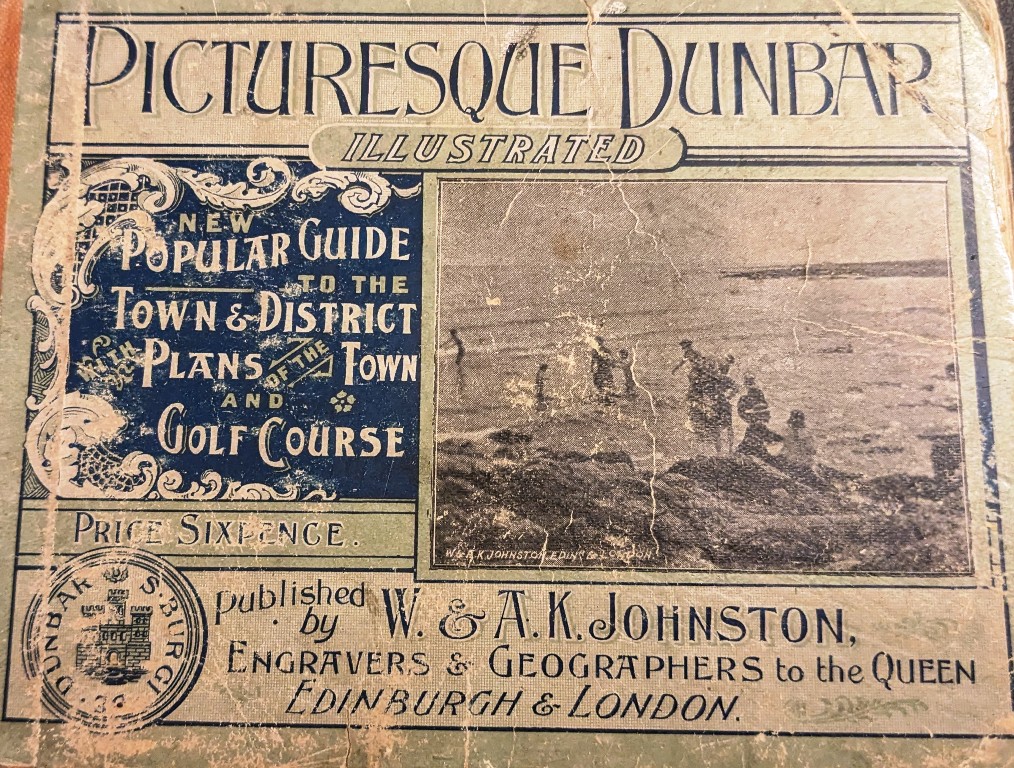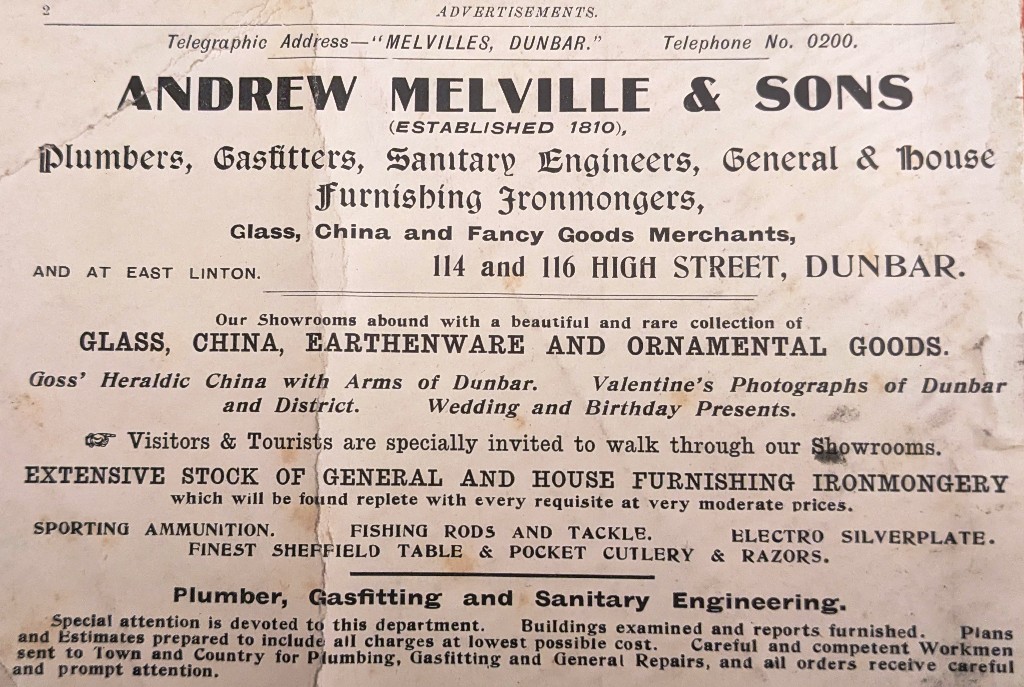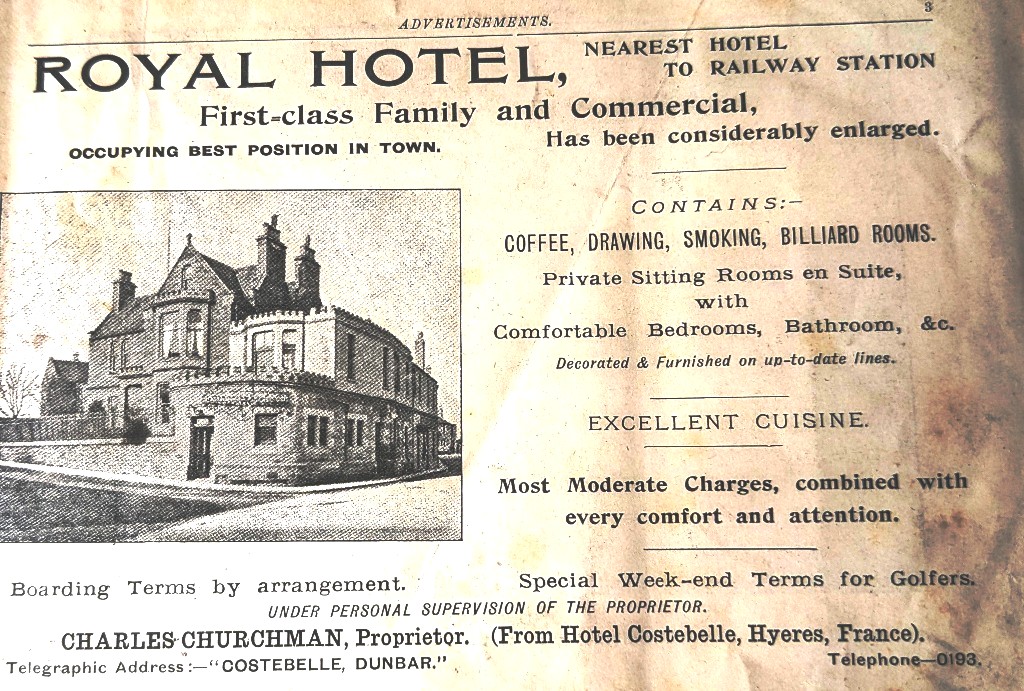January 2023
The Society was recently given two tourist brochures from the early 1900s. We found a similar one in the archives and although the content of all three different editions is much the same, there are differences in length and in the adverts. The photo below shows the front cover of one of the guides and the photo here is different from those donated to DDHS. The guides were quite substantial – thus the price, possibly over £8 today – and this one has 87 pages. Most of the content is a fairly detailed history of Dunbar, going back to the 7th century when “the great St Winifred, Bishop of York, was expelled from his See, it is recorded that he was imprisoned by Ecgfrid at Dunbar”. The front cover shows a postcard by Johnston the publishers and you can read more about their postcards here. At the bottom left, there is the town stamp with the Latin inscription.

The guides contain a range of adverts for Dunbar and Edinburgh. The photo below shows a detailed advert for Melville and Son’s shops in Dunbar. At the top, you see a telephone number but also a Telegraphic Address as telegrams were still widely in use at this time. This longstanding business – established in 1810 – covered a range of services and goods for sale. The term Sanitary Engineers is not one used today. You can read a detailed account of Goss’ China here and if interested, a technical guide to Silver Electroplating here. In a sign of the times, the shops also sold Sporting Ammunition, cutlery and razors. Pocket cutlery was also sold and you can see an example here. This is a fascinating advert for this multi-service shop.

The second advert from the guide – photo below – is of the Royal Hotel, now The Royal Mackintosh hotel and the latter is still the nearest hotel to the railway station. The hotel claimed to be Occupying Best Position in Town although this would have been disputed by other hotels in the book e.g. the Hotel Belle-Vue managed by the Proprietress – not approved of in some quarters today? – Mrs Fleck. Like most hotels at that time, the Royal Hotel boasts of separate coffee, drawing, smoking and billiard rooms, as well as en suite Private Sitting Rooms – presumably what we would call a hotel suite nowadays. This facility may have been unusual in 1902 as most people who stayed in hotels – and only the fairly wealthy did – had to share bathrooms. The proprietor Mr Churchman had come from a hotel in Hyéres (good photos) , a town in southern Provence and this is included in the advert to enhance to the reputation of the hotel and it Excellent Cuisine.

You must be logged in to post a comment.